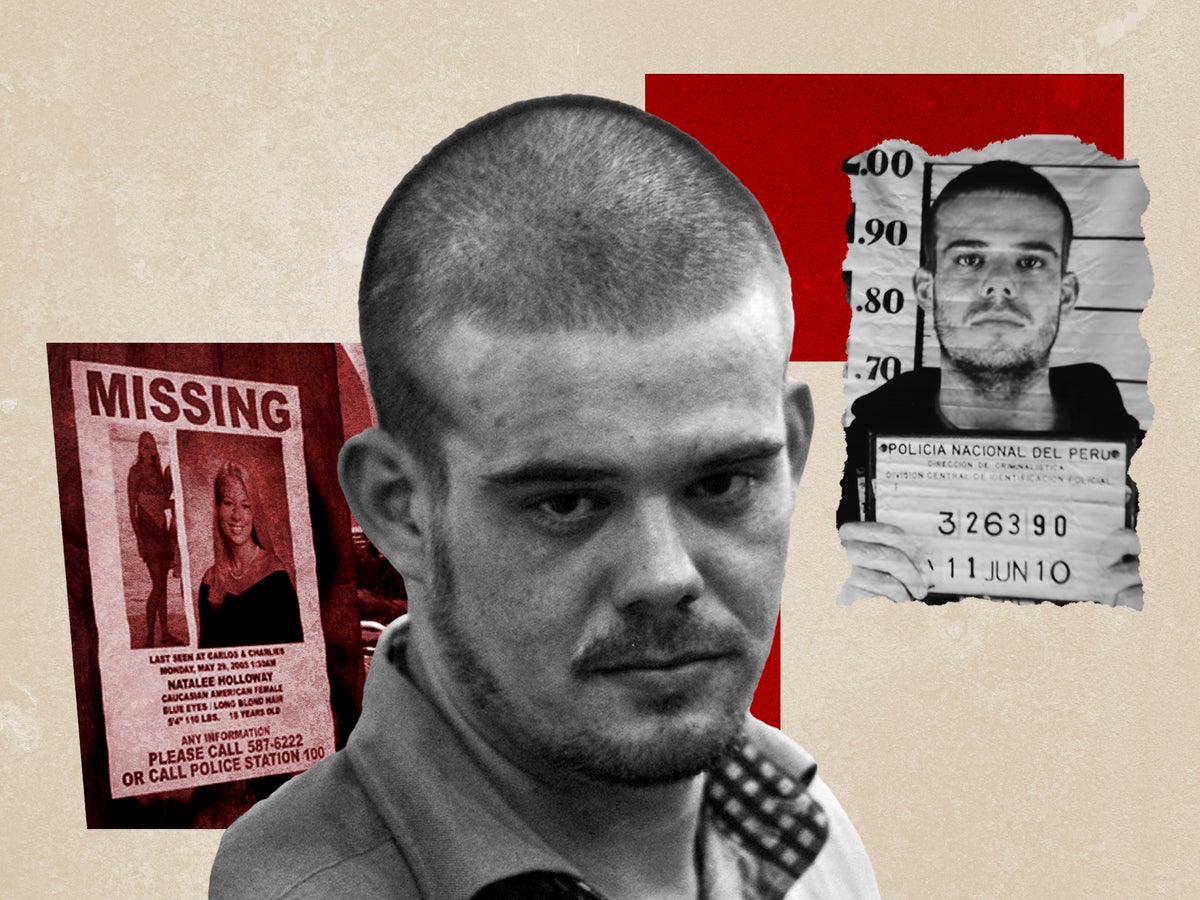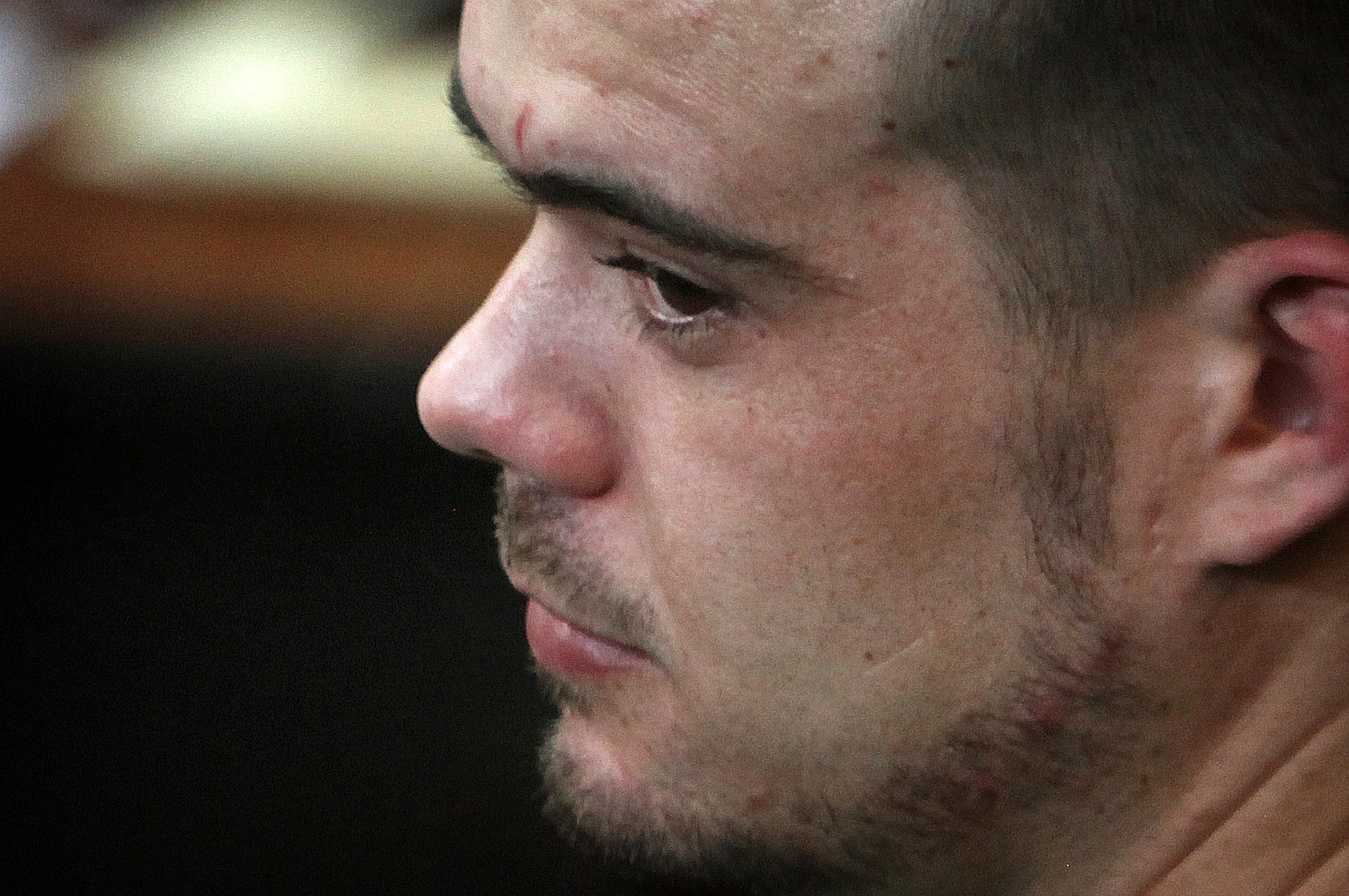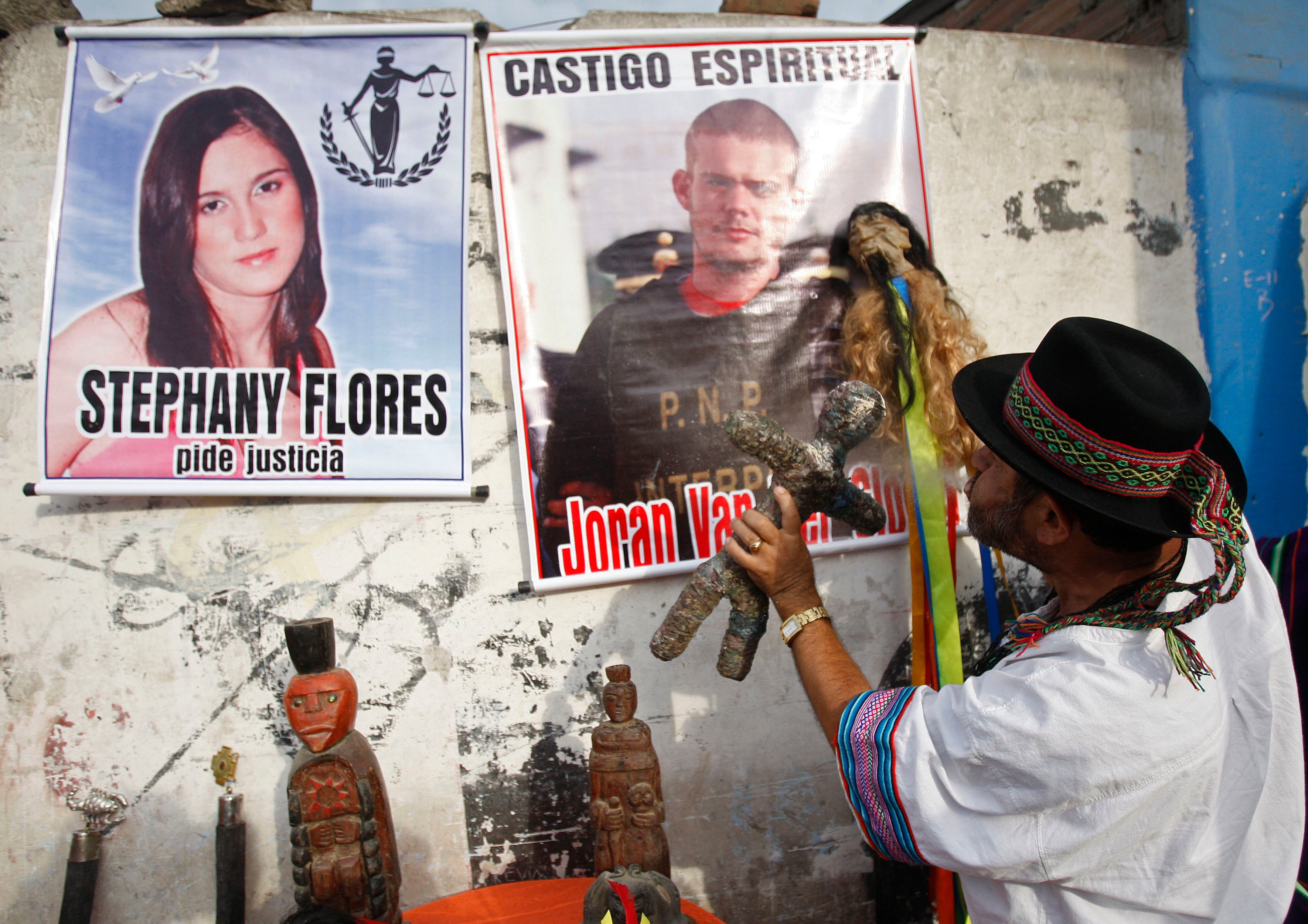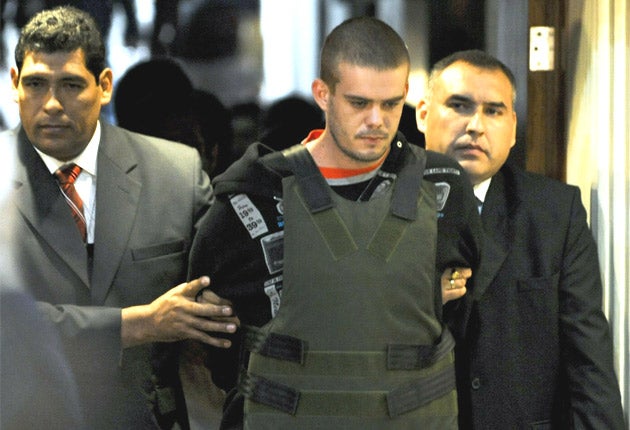
He was the island golden boy turned villain, a Dutch teenager whose name, within a matter of months, became synonymous with mystery and murder.
Joran van der Sloot was just 17 when Alabama teen Natalee Holloway vanished from the island of Aruba, where he lived with his family, and the tall Dutchman quickly became the prime suspect – and cable news’ favorite target – as the search for the missing blonde dominated news cycles over the summer of 2005.
No charges stuck, though, and van der Sloot fled Aruba, cutting a problematic path through his native Holland and then Thailand before ending up in South America. There, five years to the day from Natalee’s disappearance, the body of a 21-year-old Peruvian woman was found in van der Sloot’s Lima hotel room.
He’s currently serving 28 years for her murder in a Peruvian prison, with another 18 years added to his sentence for drug trafficking while inside.
But now, almost two decades since Natalee Holloway was last seen, van der Sloot will be extradited to her home state of Alabama to face charges.

“I was blessed to have had Natalee in my life for 18 years, and as of this month, I have been without her for exactly 18 years. She would be 36 years old now,” Natalee’s mother, Beth Holloway, said this week in a statement. “It has been a very long and painful journey, but the persistence of many is going to pay off. Together, we are finally getting justice for Natalee.”
She added that she will “have much more to say later about what is happening.”
Van der Sloot’s story has been linked inextricably to her daughter’s for the entirety of that time.
When the two teenagers met in Aruba, their lives had not been too dissimilar. Both were honours students, Natalee due to attend the University of Alabama in the fall on a full scholarship and van der Sloot planning to attend a college in Florida. Natalee was in Aruba with fellow graduating classmates from Mountain Brook, a swanky Birmingham suburb, while the Dutch tennis player was scheduled to receive his diploma within days from the International School of Aruba.
His mother, Anita, was a teacher at the school, while his father, Paulus, worked for the justice department and was training to be a judge. The family had moved to Aruba when van der Sloot was a boy, and he grew up on the island with his two brothers, building a reputation as a star tennis player and playing doubles matches with his father.
As van der Sloot progressed through his teens, however, his mother would later admit that he was sneaking out to gamble and suffering suspected psychiatric problems. It was at a casino, it seems, where he first made contact with the group of Alabama graduates; he’d been playing at the Holiday Inn, where they were staying.

The full details of van der Sloot’s interactions with Natalee have never been revealed, largely complicated by the Dutch suspect’s continuously changing stories. What is known is that the pair socialised together at a Carlos n’ Charlie’s on 30 May 2005 – a well-known island party establishment – and at one point left, after which the Alabama teen was in the company of Van Der Sloot and two of his friends, brothers Deepak and Satish Kalpoe.
The trio alternately claimed, over the years, that they’d dropped Natalie at the hotel, that they’d left her at the beach, that Van Der Sloot had sex with her, that he didn’t, that she’d suffered some kind of seizure. During the initial investigation, the Holloways were appearing on TV screens in living rooms across America; Nancy Grace, whose show had debuted on CNN just three months before Natalee’s disappearance, seized upon the story.
In Aruba, the Holloways were putting pressure on Aruban authorities and generally maintaining a powerfully visible presence with an entourage; tensions smouldered. Ultimately, without a body or any conclusive evidence, Van Der Sloot and his friends were let go.
The Dutchman returned to his home country with his father, ostensibly with plans to attend college, but the cloud of suspicion hanging over him had followed him to the Netherlands. He was particularly hounded by a Dutch crime journalist, Peter de Vries, who used hidden cameras and undercover operatives to ostensibly get Van Der Sloot to make what appeared to be some types of confessions.
In February 2008, a record-breaking 7 million people – nearly half the population of Holland at the time – tuned in to watch van der Sloot and de Vries on a Dutch late-night show; hordes soon descended on an apartment, wrongly rumoured to be van der Sloot’s home in a town in the north of the country.
Later that year, van der Sloot moved to Thailand, where he bought a restaurant and where de Vries continued to raise questions about the Dutchman’s alleged misdeeds, particularly his dealings with women. It wasn’t long before the suspect left Southeast Asia for South America.

By 2010, he was in Peru, continuing to indulge his passion for gambling – and met 21-year-old Stephany Flores Ramirez playing poker at a Lima casino. From a prominent and well-connected family, she was a business administration student at the University of Lima and ran the merchandising arm of the family entertainment and event-promotion business, her brother said at the time.
On the same night she met van der Sloot, casino video showed Stephany cashing in chips for $10,000, her father said.
Then she and the Dutchman left – and Stephany’s beaten body was found hours later in van der Sloot’s hotel room after he’d checked out without returning his key.
He was subsequently arrested in Chile and extradited back to Peru, laying bare a chilling version of events that led to Stephany’s death in a confession.
“We went to my room and played poker on my laptop, and at that time I opened my e-mail and saw a message saying, ‘I’m going to kill you, you little Mongoloid,’ referring to the ‘Holoway (sic) case’ ...,” he told Peruvian police through a Dutch translator.
According to van der Sloot, when he told Stephany about his alarming connection to the disappearance, she “struck me on the left side of my head with her fist.”
“In that moment I impulsively hit her with my right elbow in the face exactly on the nose,” he said. “There was a lot of blood all over the place. I think that she was half fainting. It affected me so much that I took her by the neck with both hands and I strangled her for a minute. At that moment I thought, ‘What am I doing?’ I got up thinking, ‘What can I do now?’ and I also had blood on my shirt. There was also blood on the bed so I took my shirt, placed it on her face pressing hard untilI killed Stephany.”
He said that he’d “lost control of my actions, I didn’t know what I was doing. I remember what I was doing but not the motive. It was an impulsive act after receiving a blow to the head.”

In January 2012, Van Der Sloot was sentenced to 28 years in prison for Stephany’s murder. The same year, Natalee Holloway was officially declared dead.
By then, however, the Dutchman was already in legal trouble in her home state.
On 3 June 3010 – four days after Stephany’s murder and the anniversary of Natalee’s disappearance – federal prosecutors in Birmingham announced a criminal complaint against Van Der Sloot “on wire fraud and extortion charges in connection with his soliciting money in May on promises he would reveal the location of Natalee Holloway’s remains in Aruba and circumstances of har death.”
The complaint charged that the suspect “extorted $15,000 from an individual as partial payment toward his promise to reveal the location of Natalee Holloway’s remains for $250,000 ... the complaint also charges Van Der Sloot with wire fraud for causing the $15,000 to be transferred by wire from a Birmingham bank to a bank in the Netherlands in furtherance of his scheme to defraud.”
The target of the alleged scheme – a woman tragically re-victimised – was Beth Holloway, who made a $25,000 down payment only for the information to prove to be false.
According to AP, “an FBI agent wrote in an affidavit that van der Sloot reached out to Holloway’s mother and wanted to be paid $25,000 to disclose the location and then another $225,000 when the remains were recovered. Van der Sloot requested that an agreement be drafted and signed by the mother and him.
“A New York attorney representing Beth Holloway traveled to Aruba with the agreement and gave van der Sloot $10,000 in cash during a recorded meeting, according to court records,” AP reported. “The indictment says both men then went to a site where the student’s remains were purportedly buried, and Beth Holloway made a wire transfer for $15,000 to van der Sloot’s bank account in the Netherlands.
“In the affidavit, the FBI agent wrote that van der Sloot in later emails to the attorney admitted to lying about the location.”
The maximum sentence for the extortion charge is 20 years and 30 years for wire fraud – and earlier this year, van der Sloot’s original jail term in Peru had already been lengthened.

In January, he was given an additional 18 years in prison for drug smuggling, according to the Telegraaf, allegedly playing a “crucial role” in selling cocaine inside and even sending it to recipients outside Peru.
The convicted murderer has certainly been busy while behind bars in South America; in July 2014, he married a 25-year-old Peruvian woman, Leidy Figueroa Uceda, who gave birth to his child that autumn.
“Many people judge Joran and criticise him saying he is a monster and an assassin, but when you get to know him, you know he is different,” his wife told MailOnline that year. Describing the prisoner as “gentle, sensitive” and “kind,” she also said she did not believe he’d killed Natalee – but didn’t want to ask.
Despite the marriage and new baby, the couple would be barred from enjoying life together on the outside until at least 2045 – and that was before the announcement of his extradition, made possible by a 2001 treaty between Peru and the US.
“A resolution published in the South American country’s federal register states that U.S. diplomats on Jan. 10 presented the temporary extradition request to Peru’s Ministry of Foreign Relations,” AP reported.
“The time that van der Sloot ends up spending in the U.S. ‘will be extended until the conclusion of the criminal proceedings,’ including the appeal process should there be one, according to the published resolution. The resolution also says US authorities agreed to return the suspect to the custody of Peru afterward.”
No timeline has yet been revealed by US or Peruvian authorities regarding the extradition, which van der Sloot’s attorney said he will fight once he’s received proper notification from the Peruvian government.
“I am going to challenge that resolution,” Maximo Altez told AP. “I am going to oppose it since he has the right to a defence.”
It will be a defence mounted in yet another country for Van Der Sloot, after he beat repeated arrests in Aruba, has spent more than a third of his life in jail in Peru and now will finally travel to the United States to face serious charges – and serious scrutiny.
From the outset, the man suspected of being the last person to see Natalee Holloway alive has spun a web of fabrications and lies surrounding her disappearance. Perhaps now, as he faces justice in the beloved state where she grew up and planned to build a life, the truth will finally come out.







